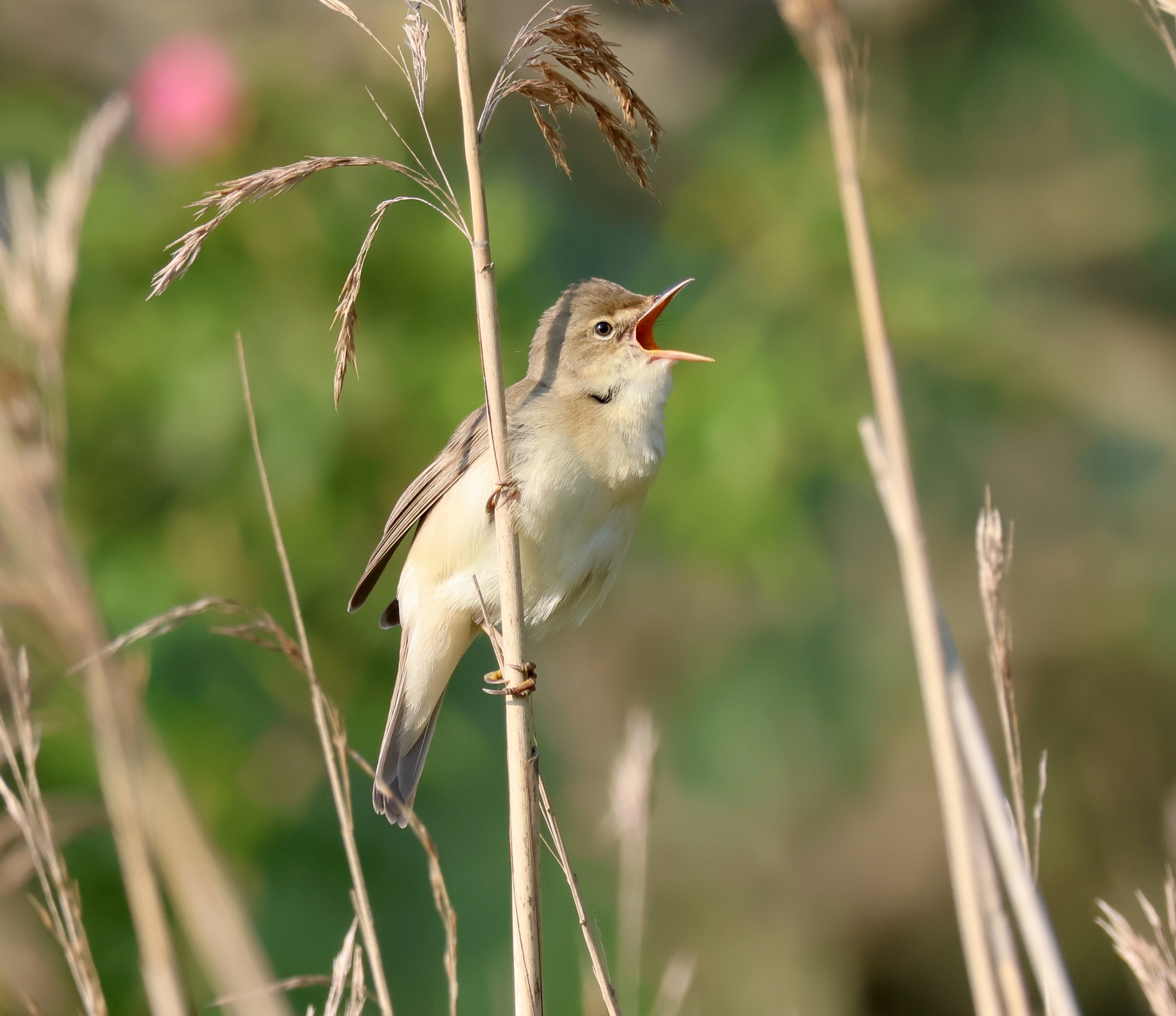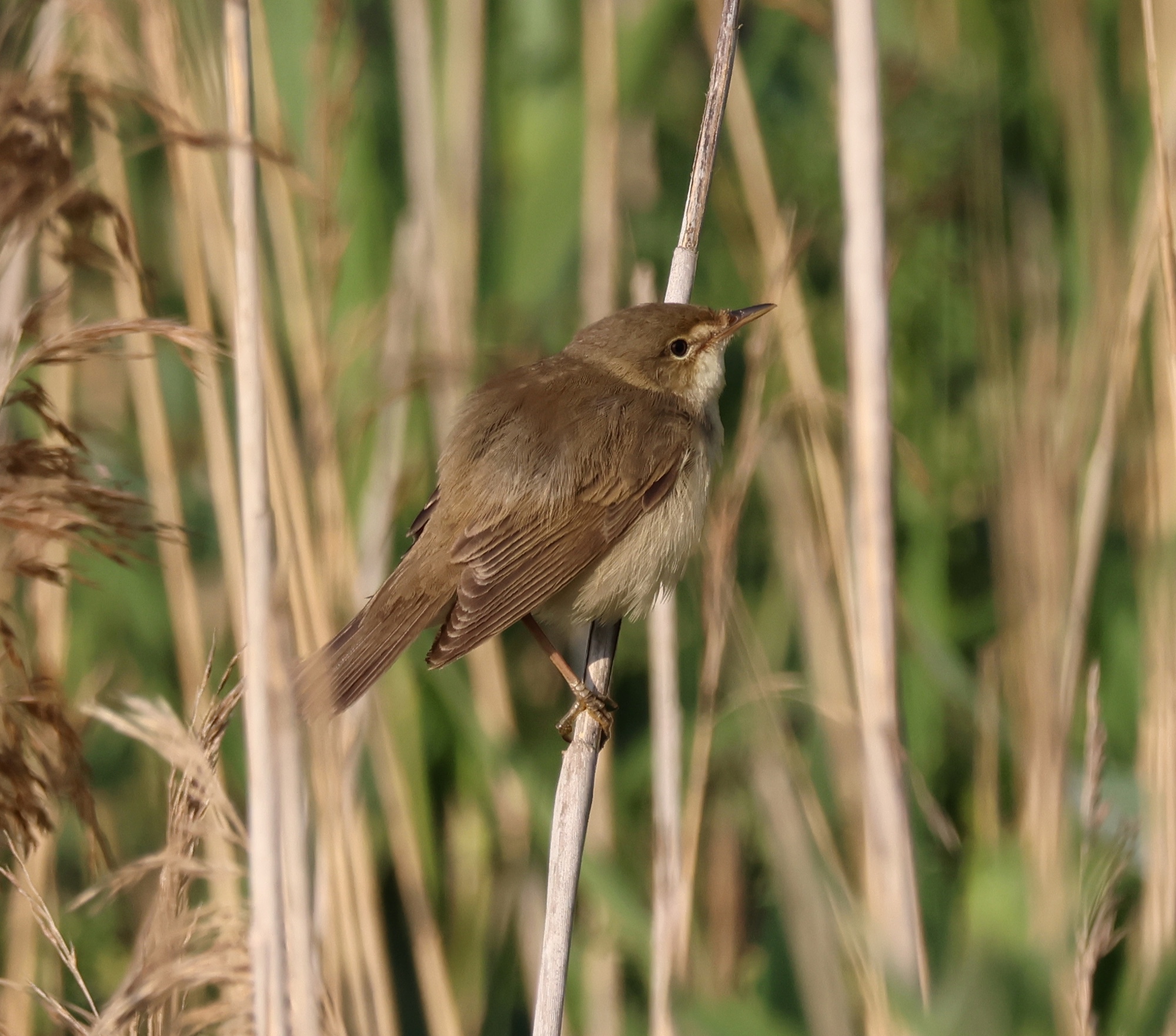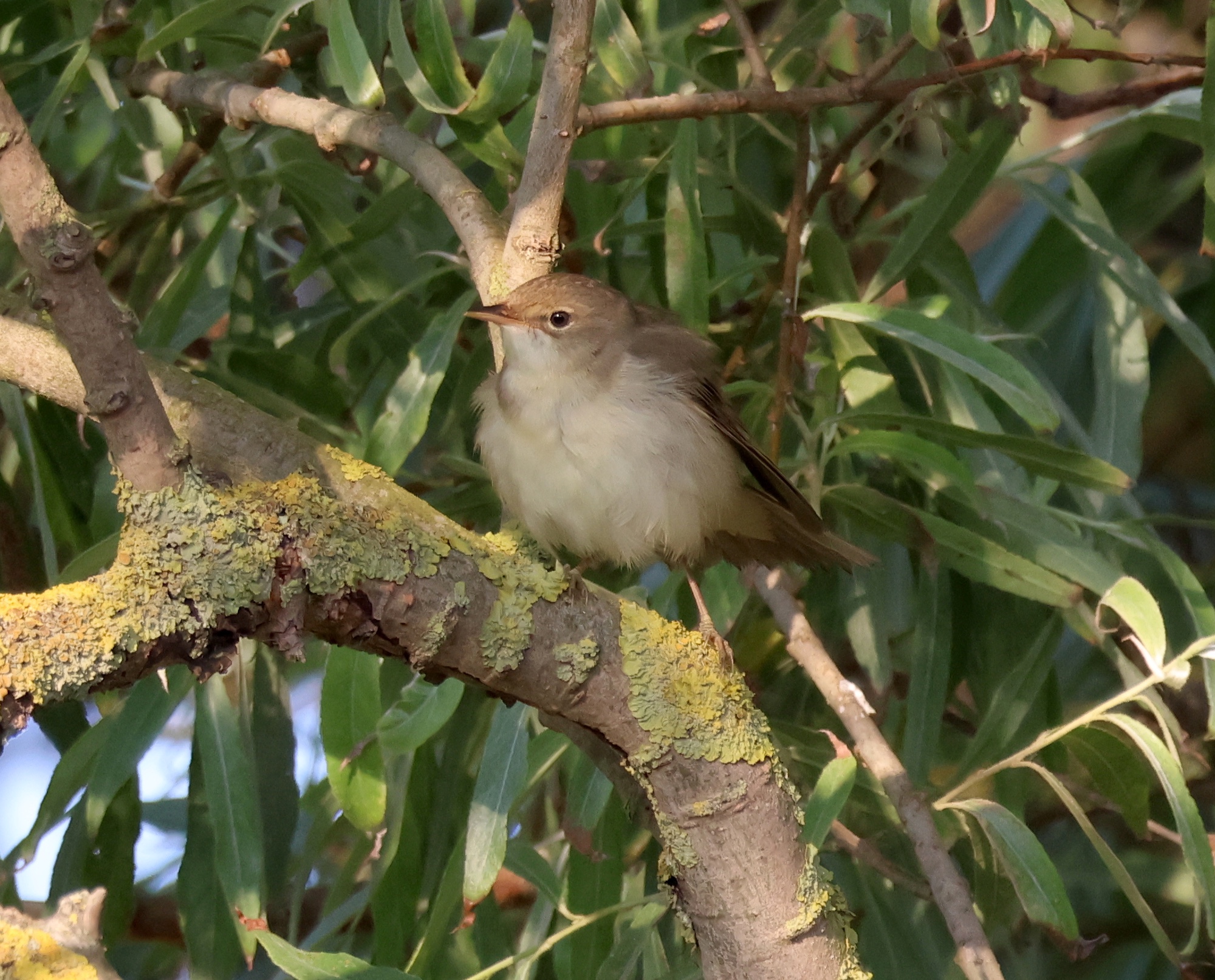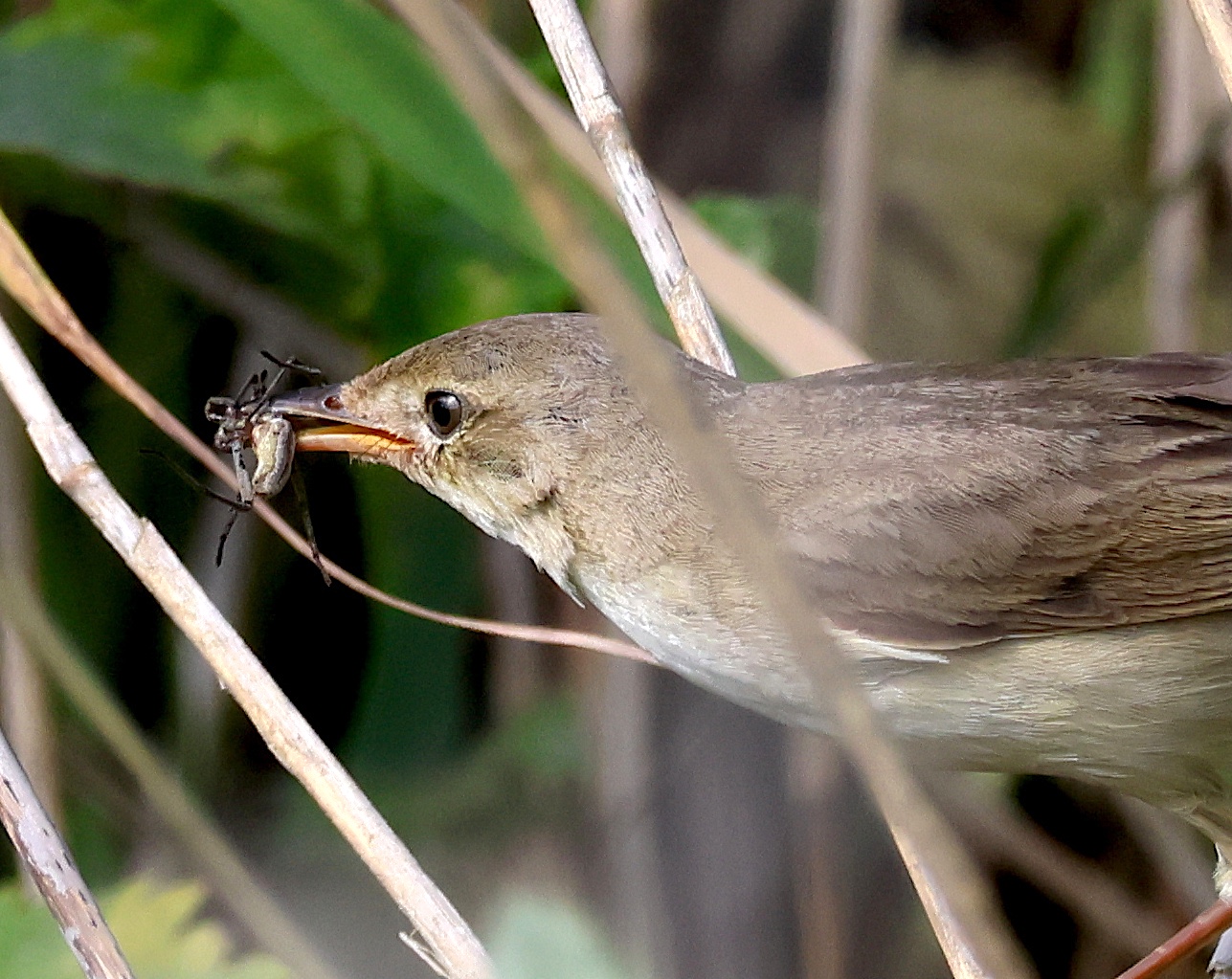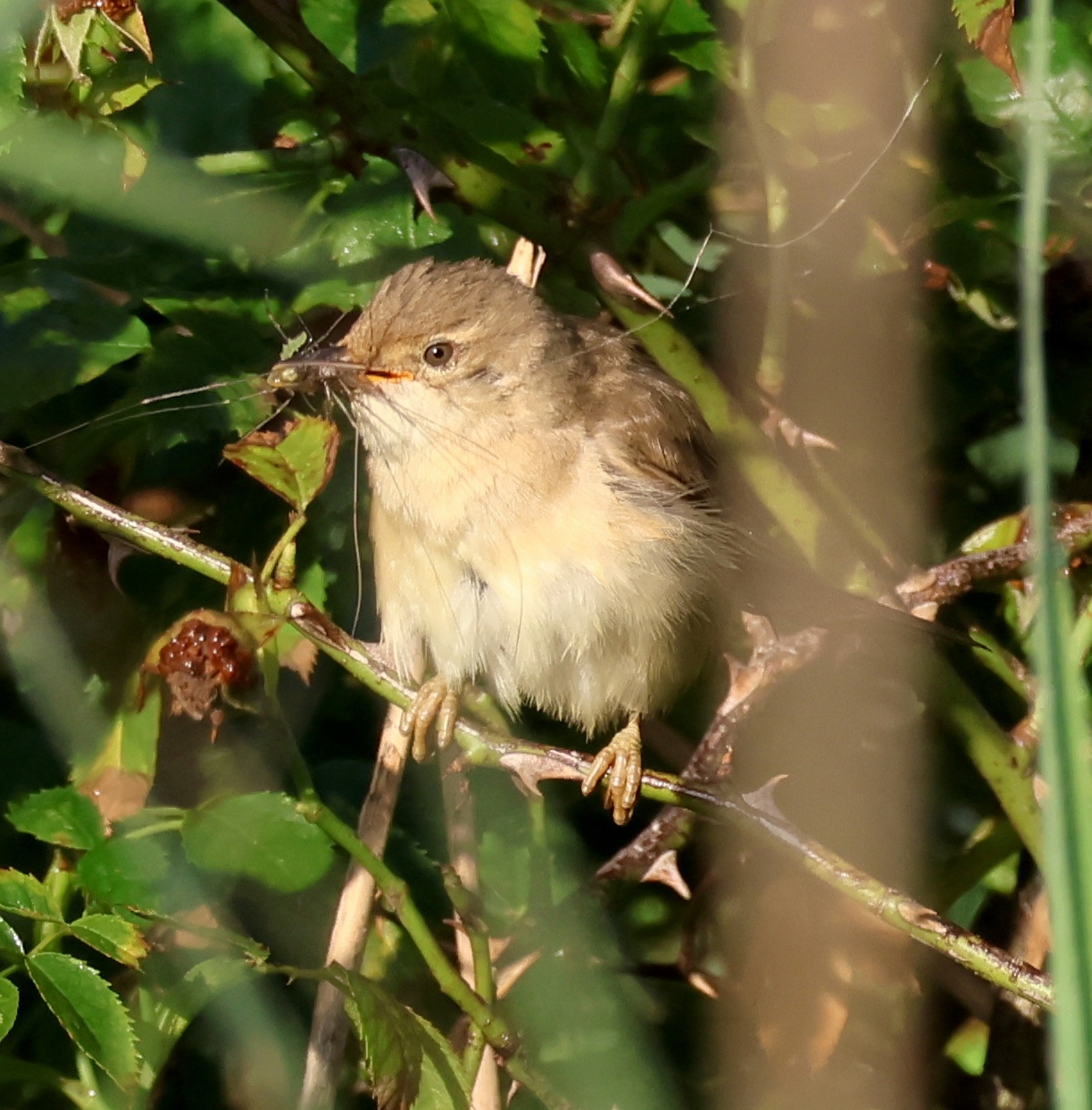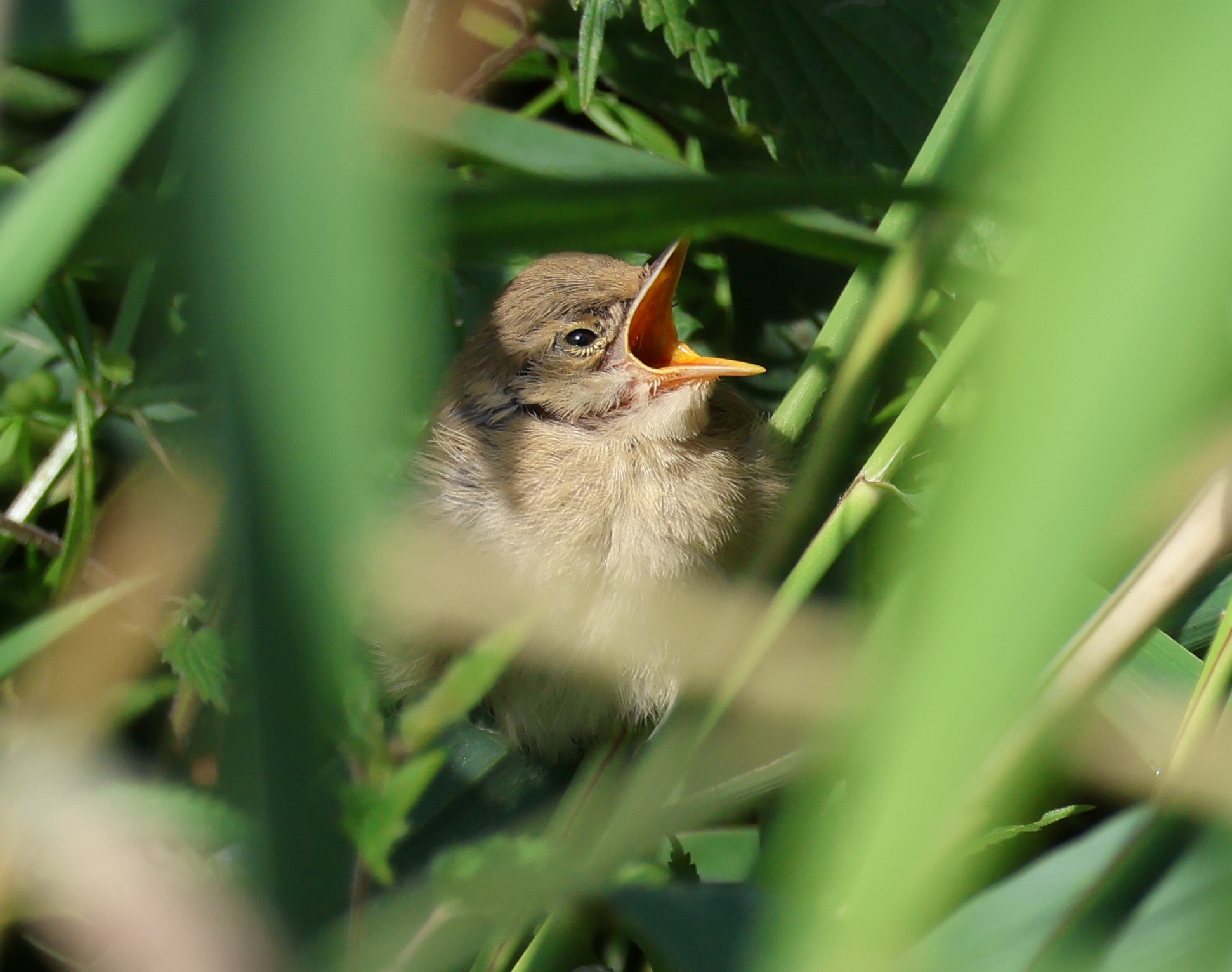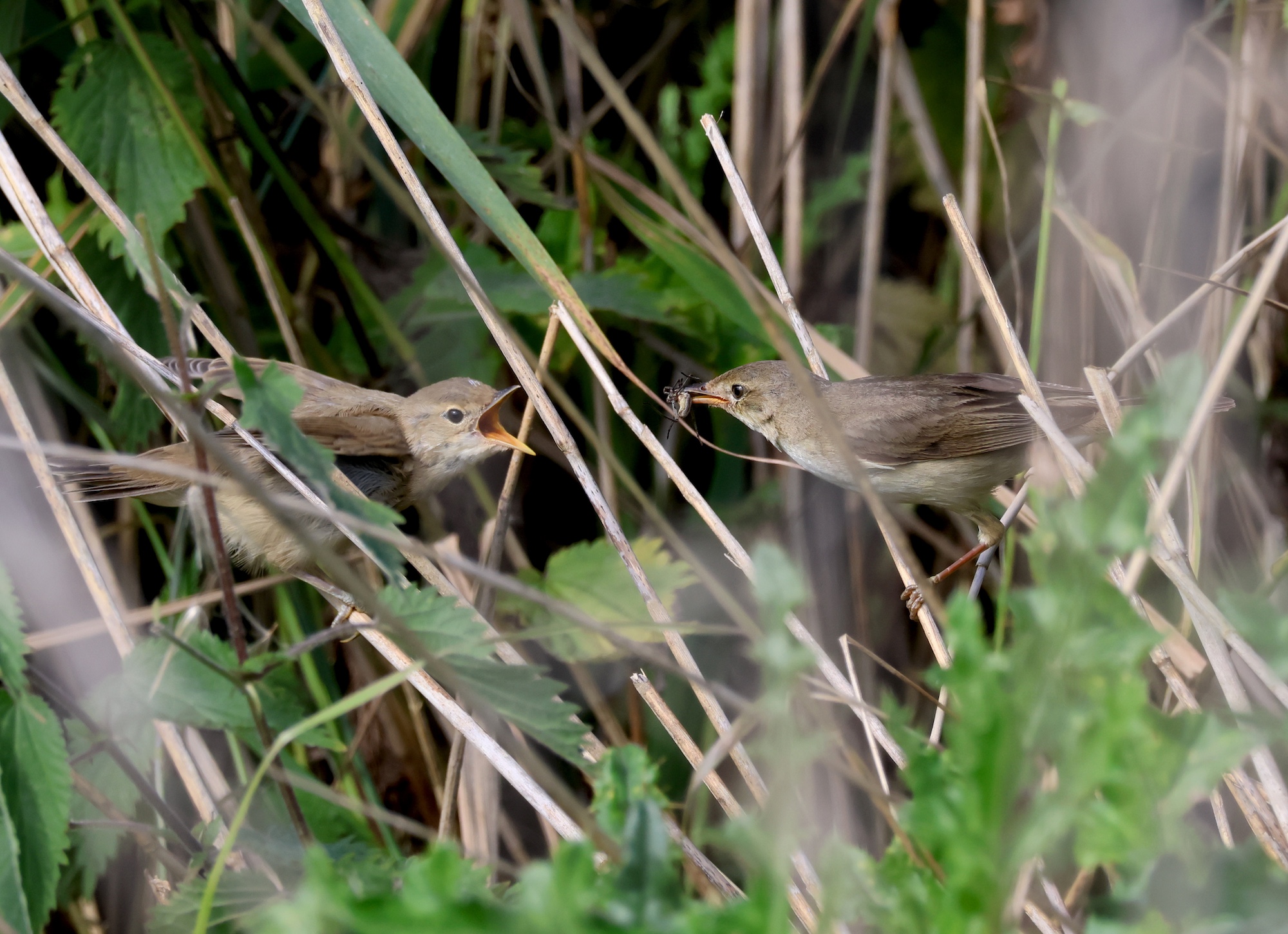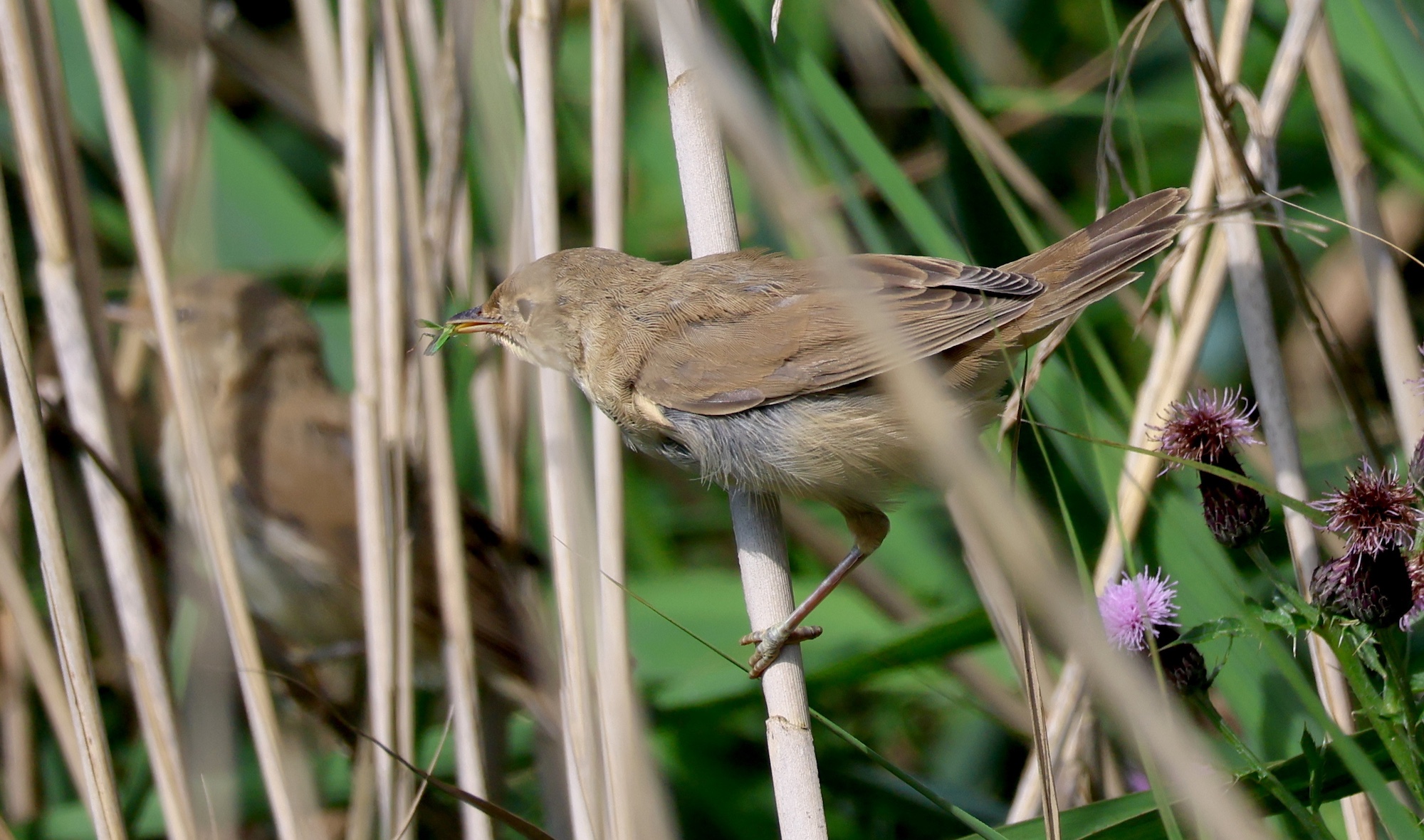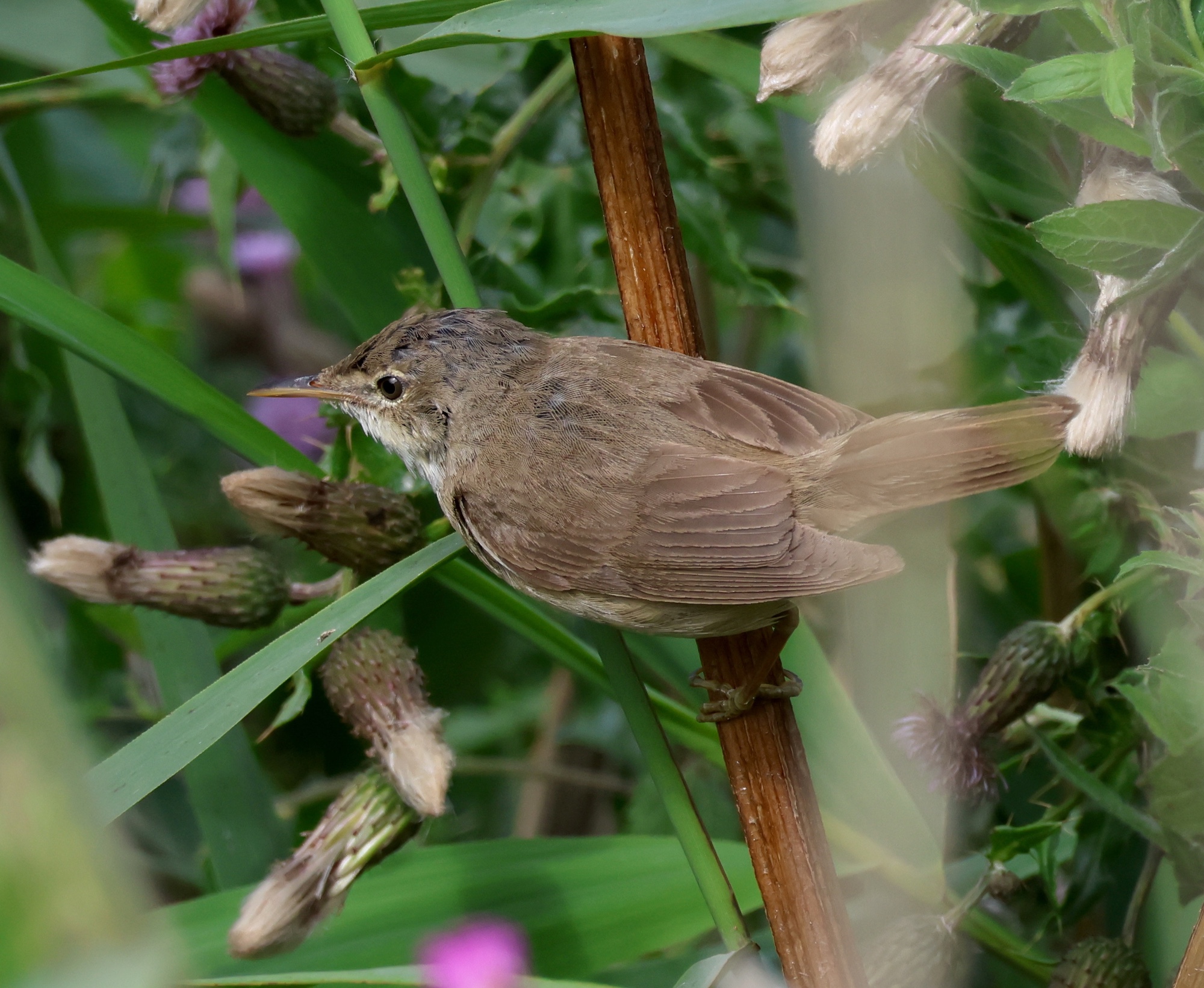Marsh Warbler Acrocephalus palustris
Very scarce migrant and potential breeder. First recorded in Lincolnshire in 1961.
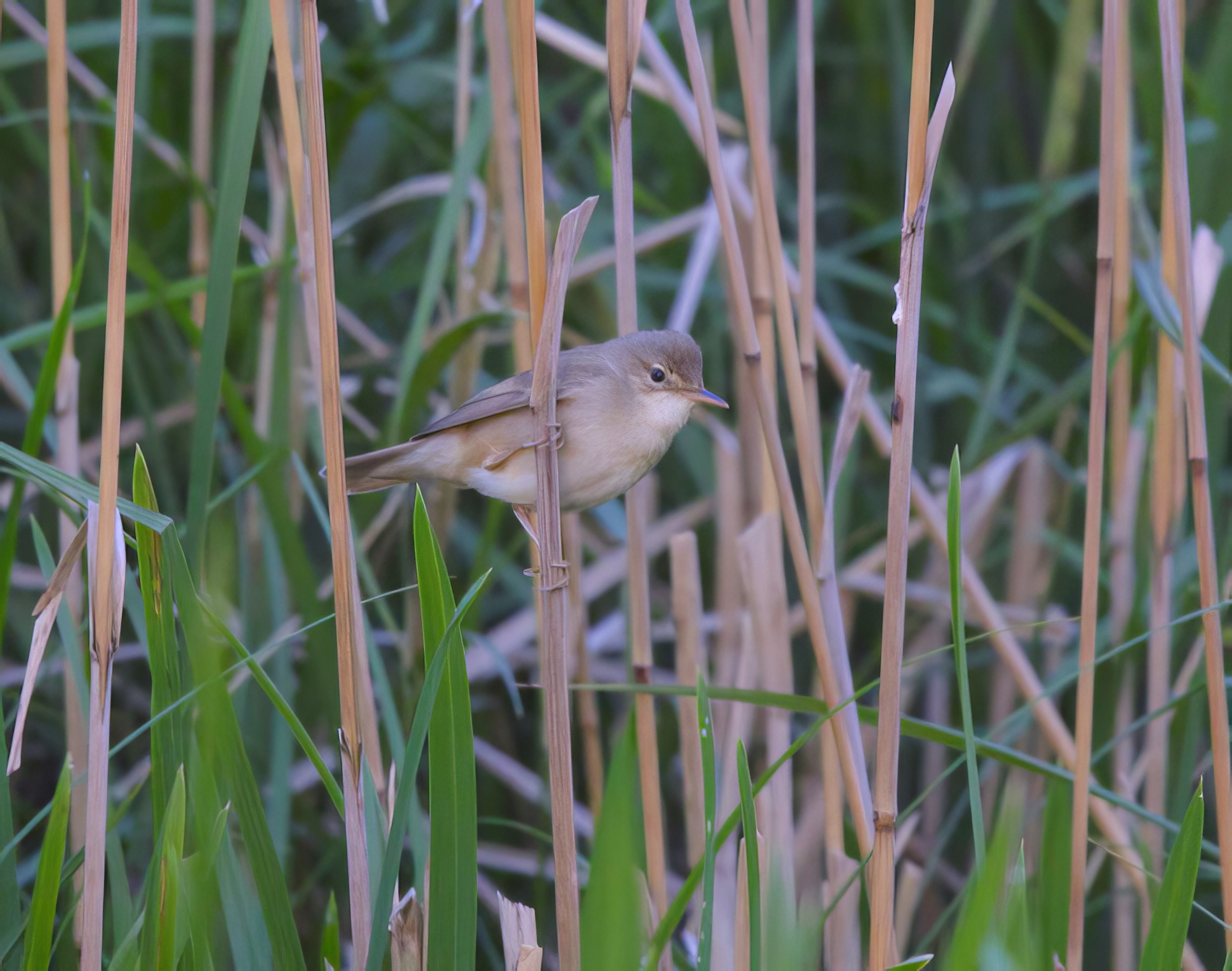
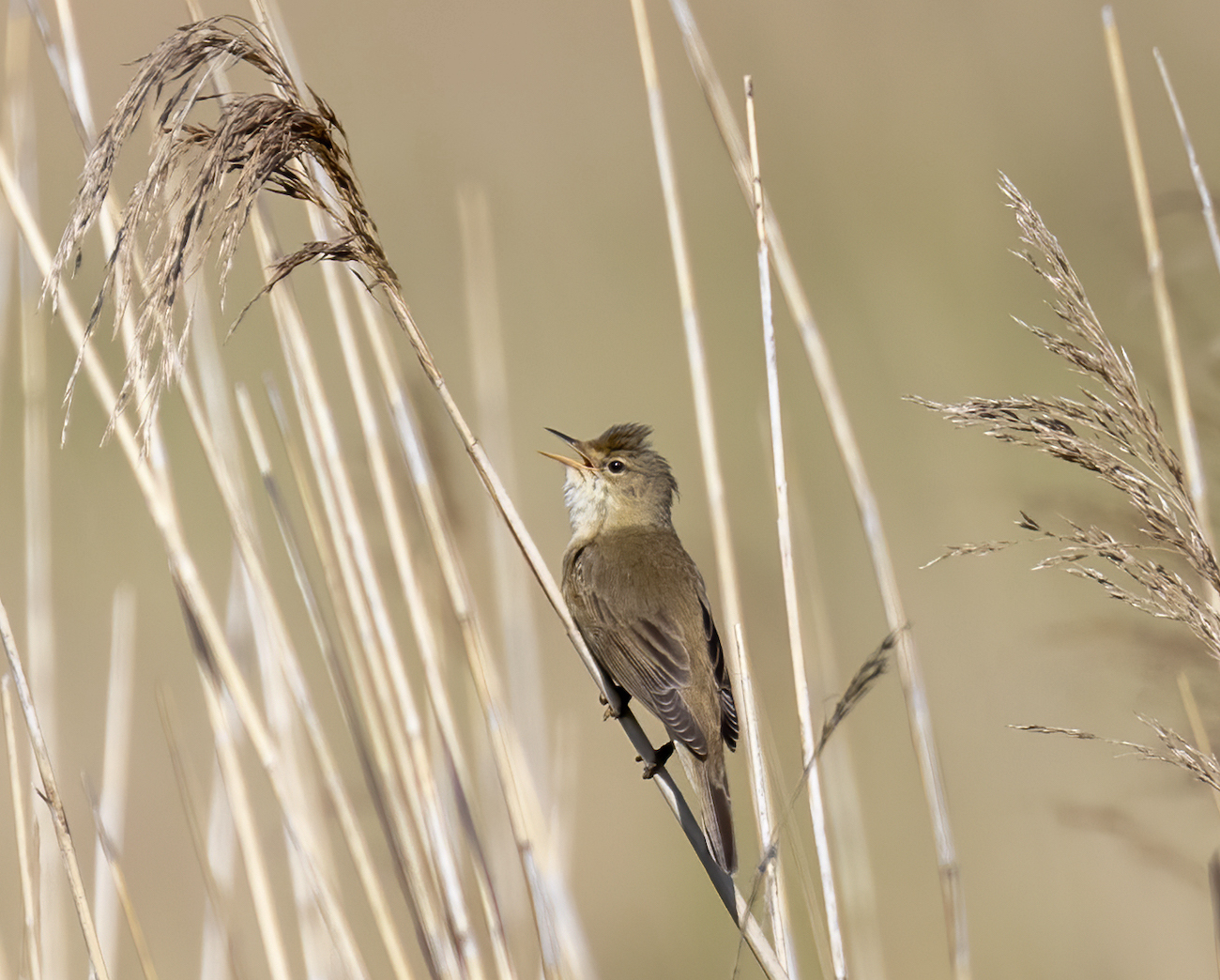
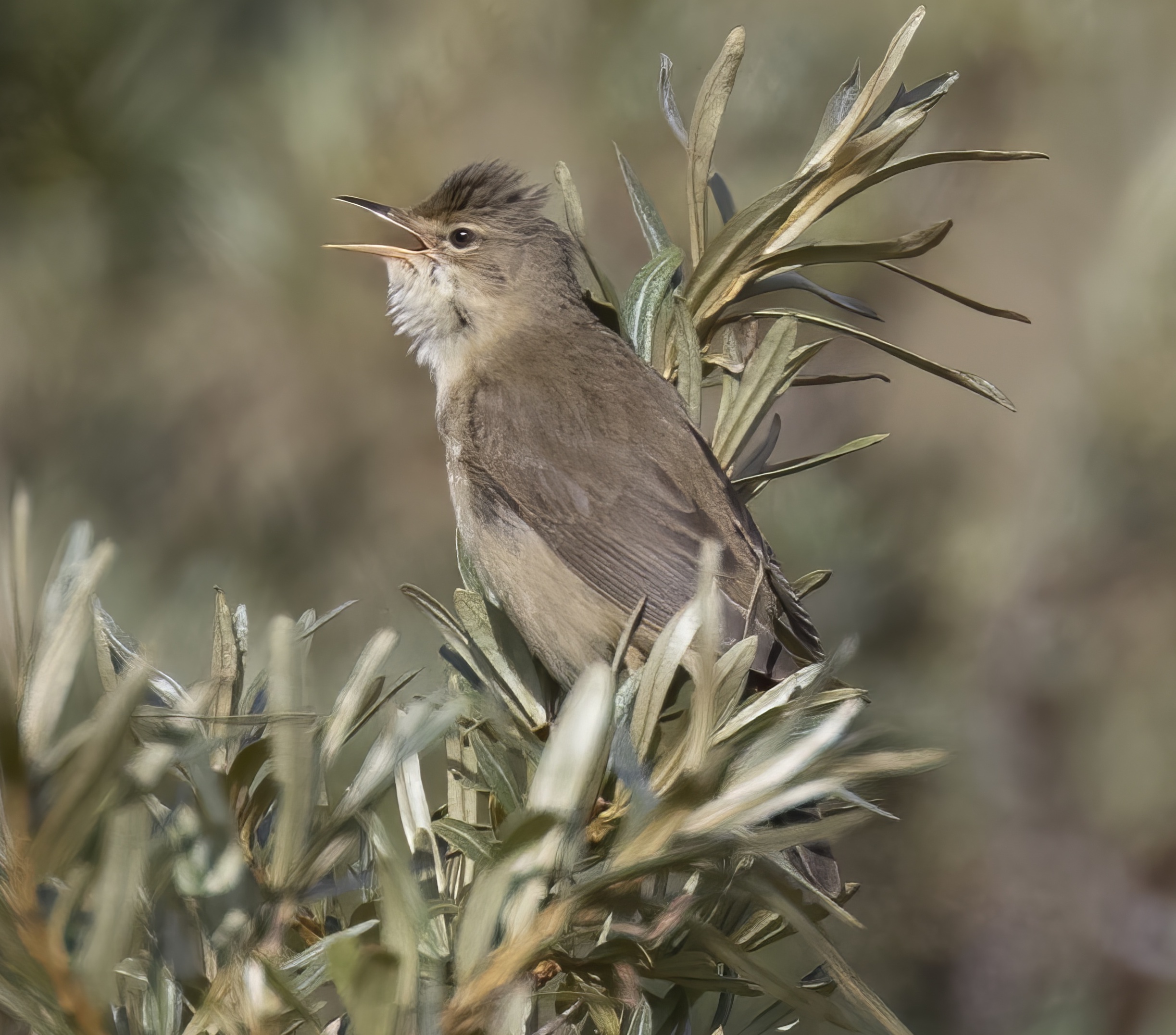
Marsh Warblers: left, Horncastle Canal May 22nd 2014; centre and right, Wolla Bank Pit June 2020 (all photos by Graham Catley).
First recorded on 8th October 1961 when one was trapped at Low Farm, Tetney, and since then around 40 have now been recorded. Between none and two per year is typical but there were three in 1992, and a remarkable 12 in 2008. That year saw an arrival along the east coast between Shetland and Essex involving about 50 birds during May 27th-31st. The Lincolnshire complement included six in the Donna Nook area, two on Saltfleetby-Theddlethorpe Dunes, one at Skegness and three at Gibraltar Point. Most if not all were singing males, and that is a feature of the majority of records in the county. Indeed, they are probably very likely to be missed if they are not singing or trapped. Most Marsh Warblers have been found in a short period in late spring with 35 individuals being recorded between May 17th and June 25th. Coastal records have predominated, with 31 of the 40 found between Cleethorpes and Gibraltar Point. The other nine include one trapped at Ancaster on August 16th 1966 and singing males at Messingham Sand Quarry (three), Barton Pits (four), Bardney, Fiskerton and Horncastle canal.
Singing males have held territories in spring in four of the last 29 years up to 2020. These were in 1997, 2012, 2019 and 2020. There was no evidence of a pair or nest building up to 2019. At one site in 2020 two birds were thought to be present. Marsh Warblers have declined dramatically as a breeding birds in Britain and 17 out of 18 singing birds reported by RBBP in 2018 were along the east coast from Kent to Shetland. There is a healthy breeding population along the Dutch, German and Danish coast which breeds in very similar habitat to the scrubby reedy dykes along the Lincolnshire coast. The European population takes a south-easterly migration route to winter in Africa. Birds returning to the North Sea coast to breed in spring can easily overshoot and end up in Lincolnshire.
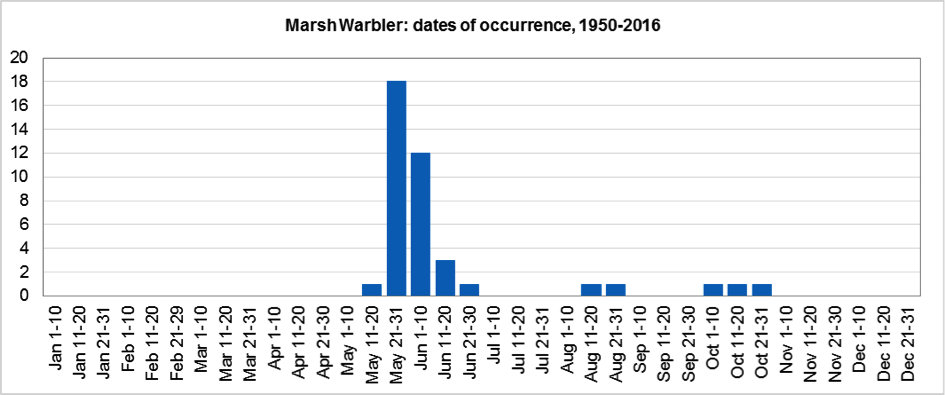
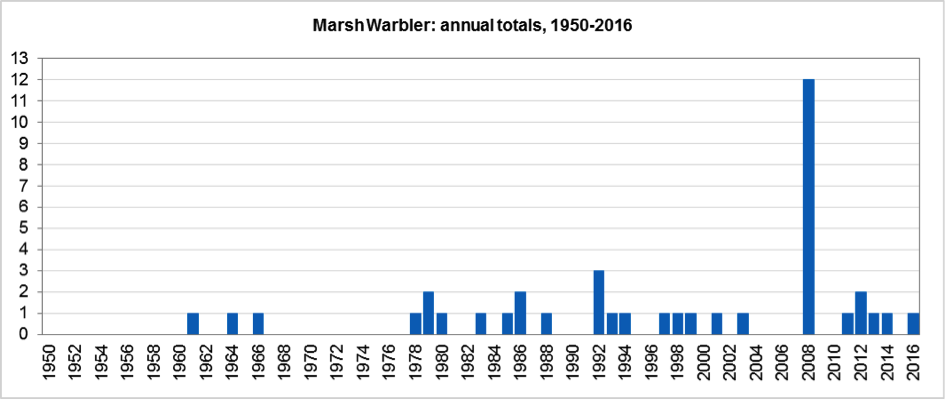
Marsh Warblers at Chapel Six Marshes in 2023: the first breeding record for Lincolnshire
North-easterly winds dominated the early to mid-June period in Lincolnshire, and consequently five singing Marsh Warblers were located along a 2.5-km stretch of the coast, with two at Chapel Six Marshes, a single at Wolla Bank and two at Anderby Creek. Most of these swiftly moved on but one, the first arrival, lingered, singing vigorously and raising hopes that it might attract a female.
Behaviour on arrival
Many observers enjoyed the bird in the first few days after it arrived as it sang often and showed very well in close proximity to a pathway, with the bird occasionally taking to the highest trees to sing.
Display
On 13th June, a second Marsh Warbler was noted in close proximity to the male, and the following day the male was observed displaying and lots of contact calls - consisting of harsh ‘chek calls - were noted. When displaying the male would adopt an exposed perch and droop and then vibrate its wings (photo, left, below), the body feathers ruffled up and tail splayed (photo, right, below). The bill was typically held horizontally or slightly upwards and sometimes slightly open.
Nest building
The male’s advances clearly did the trick as later the same day the female was observed carrying small twigs, many from phragmites, whilst the male often sat sunning itself and watching on, its wings drooped, and tail slightly fanned, or it would loosely follow the female around. The male's persistence had been well rewarded – a study in Belgium found the gap between the pairing of males and females averaged 3.3 days (Dowsett-Lemaire 1981) compared to 13 days for the Lincolnshire birds.
Thereafter, things went very quiet – males soon stopped singing after pairing (Kelsey, 1989). Daily observations brought only occasional sightings of the adults, which at least confirmed their continued presence, but this period was spent nervously waiting to see if the birds had been successful – only around half of pairs typically manage to raise young in a UK study (Kelsey, 1989) and 64% in Russia (Shitikov et al., 2018).
Food carrying and nest site
The evidence we wanted came on July 12th when the adults were observed bringing in food. The male and female developed markedly different approaches to the nest site, which made establishing the exact nest location – in an area of willowherb – difficult to ascertain. One would fly into the channel, often plunging low into the reed stems before either moving to a nearby dog rose or along the channel to the nest site. The other adult typically flew into nearby trees where it would cautiously wait and observe. It would then move to the next site via one or two dog rose bushes, before moving through the reeds on the final approach. The nest itself was in a fairly small area of willow herb (estimated to be <5m long and a couple of metres wide) amongst the phragmites. A variety of food items were identified including Ruddy Darter (First photo, below), Nursery Web Spider (Second photo, below) and bush cricket.
By the July 17th it was clear that feeding rates were reaching a peak, with a 30% increase in nest visits over a period of 48 hours and the removal of faecal sacs was noted. Eventually, on July 18th the first juvenile was seen (photo, above right), the second was noted on the July 20th, and a third the day after. Clutches of four predominate for late-breeding Marsh Warblers (Kelsey, 1989) and this proved to be the case for the Chapel birds, with four juveniles successfully fledged by July 26th. At this time the juveniles were seen associating in two pairs, with the eldest two around 40m from the nest, and the youngest pair still keeping close to the nest site. On this date the eldest juvenile, in the close company of the second fledgling, was seen feeding itself (Right-hand photo, below). Four successful fledglings at Chapel compare with a mean clutch size of 4.7 in Russia with an overall fledgling success rate of 2.8 per pair (Shitikov et al., 2018). As is typical for the species, the birds dispersed very rapidly, and an adult seen carrying food some 150m from the nest site on July 27th was the final sighting.
Appearance of adults over the course of the breeding season
Towards the end of July, the two adults differed greatly in terms of plumage wear, with one fairly worn while the other still appeared relatively fresh plumaged (Photos, below). It is interesting to speculate which of the pair had the most worn plumage.
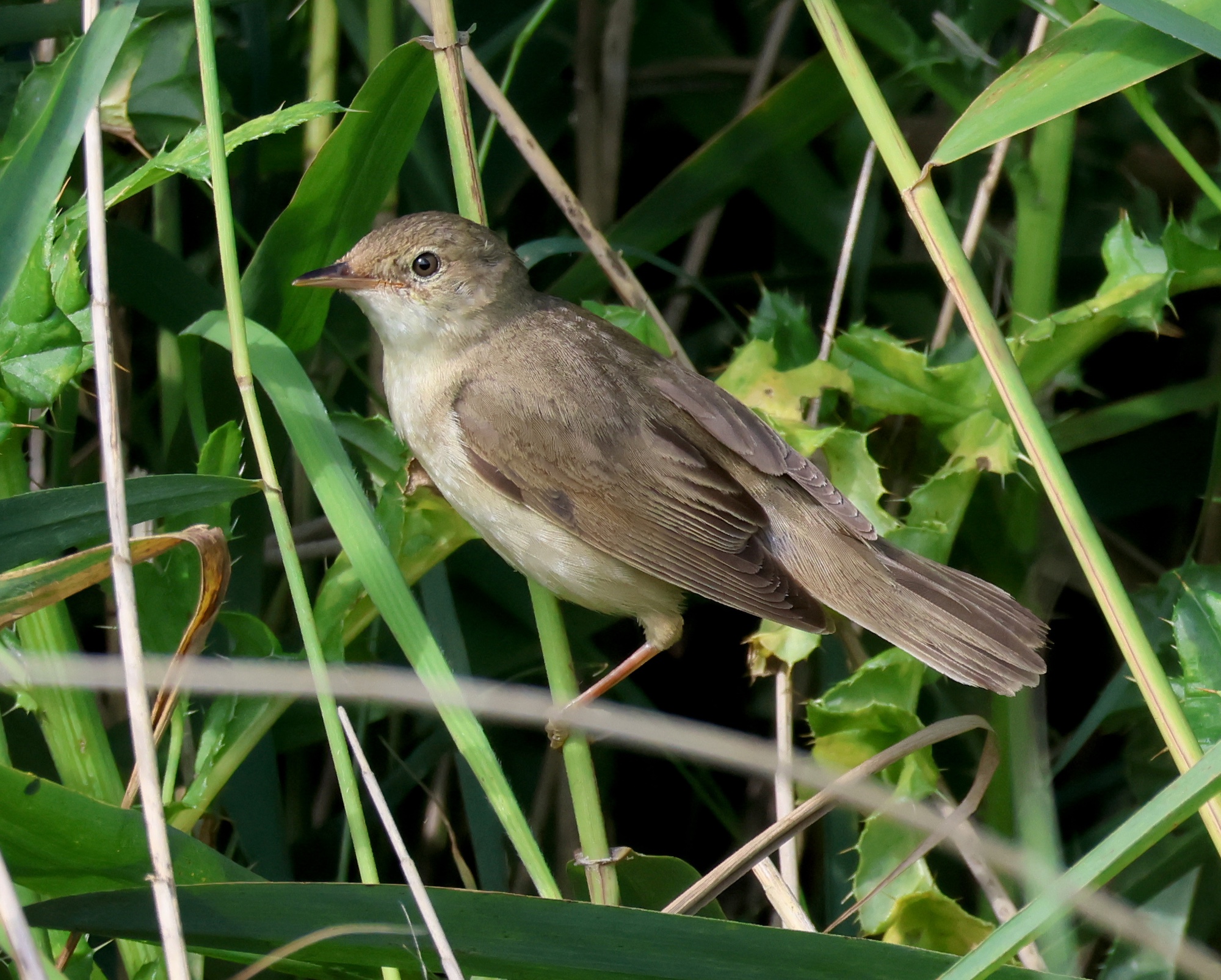
Summary
This represents the first confirmed breeding record of Marsh Warbler for Lincolnshire and follows the pattern observed since the 1990s of the UK breeding distribution shifting towards coastal areas in the east (Bell et al., 2021). The breeding cycle was observed form start to finish, the end result being the successful fledging of four juveniles.
Acknowledgements
I would like to thank Dick Lorand and Richard Doan for help with locating and monitoring the Marsh Warblers and Dave Miller for help with identification of the food items.
References
Bell, B, Green, H, Hodson, J, & Holling, M. (2021). The recent history of breeding Marsh Warblers in Britain. British Birds 114: 255-266.
Dowsett-Lemaire, F. (1981). Eco-ethological aspects of breeding in the Marsh Warbler, Acrocephalus palustris. Revue d'Écologie, 35 (3): 437-492.
Kelsey, M G. (1989). Breeding biology of Marsh Warblers Acrocephalus palustris in Worcestershire: A comparison with European populations. Bird Study, 36(3): 205-210.
Shitikov,D, Knyazeva, I, & Grabovsky, A. (2018). Breeding phenology, reproductive traits and apparent survival of sympatric Marsh Warbler Acrocephalus palustris and Blyth’s Reed Warbler Acrocephalus dumetorum. Bird Study, 65:2, 241-248.
(Account prepared October 2017; updated 2025)


